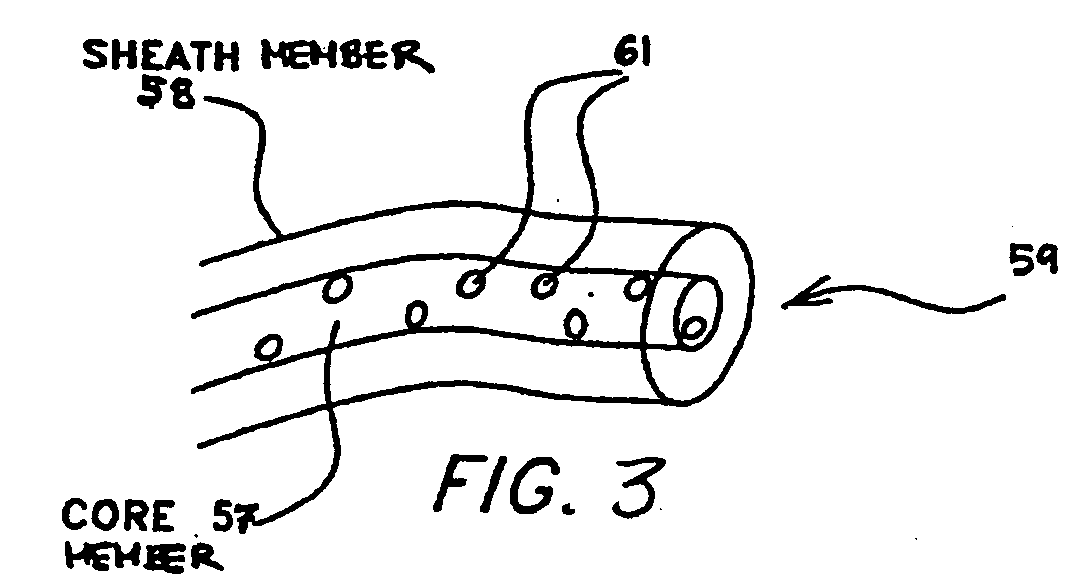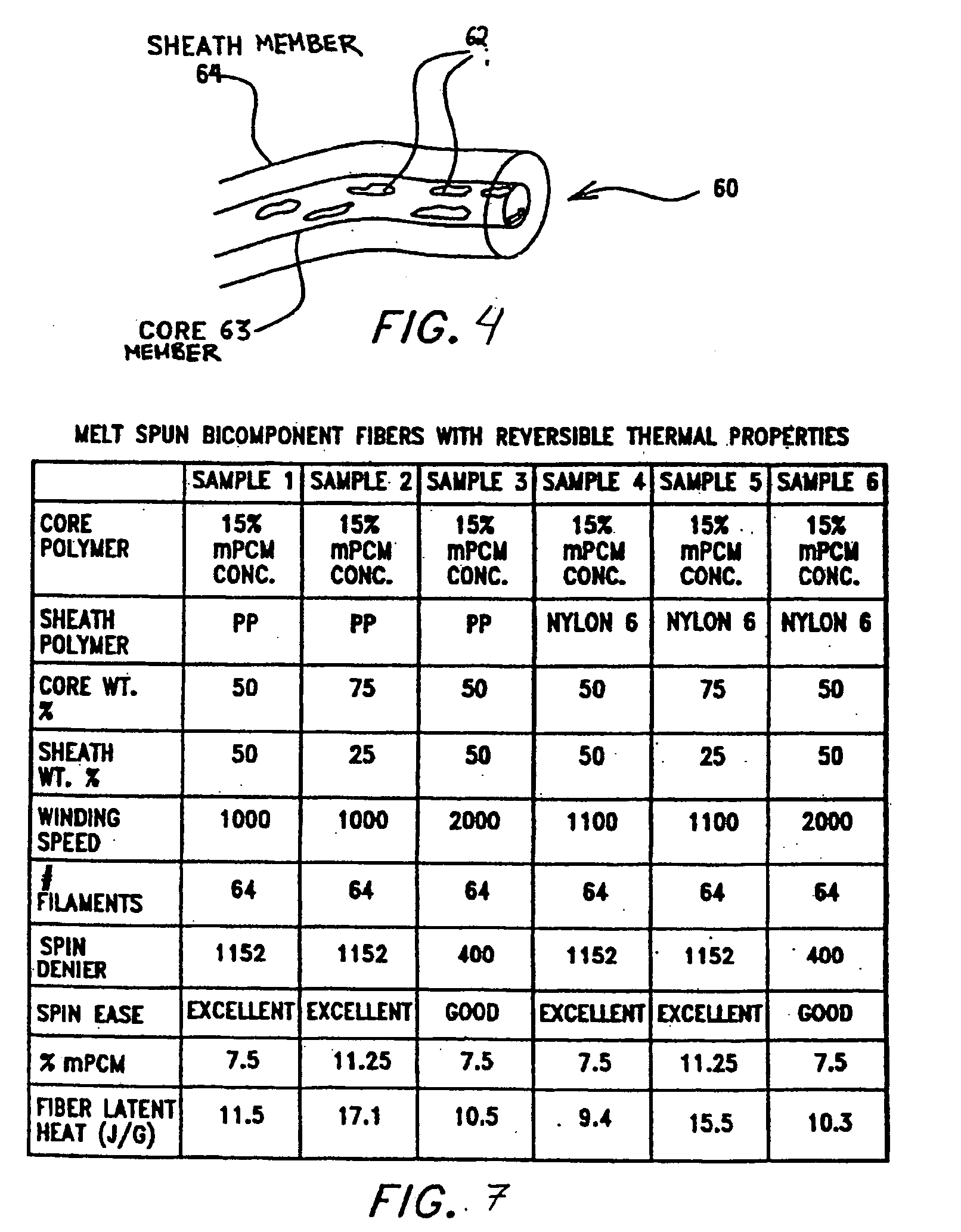Multi-component fibers having enhanced reversible thermal properties and methods of manufacturing thereof
a multi-component fiber and thermal insulation technology, applied in the field of synthetic fibers, can solve the problems of poor fiber properties, insufficient dispersion of microcapsules within the fiber, and more difficult to incorporate phase change materials into melt spun synthetic fibers
- Summary
- Abstract
- Description
- Claims
- Application Information
AI Technical Summary
Problems solved by technology
Method used
Image
Examples
example 1
[0118] About five pounds of a low molecular weight polyethylene homopolymer (AC-16 polyethylene, drop point 102° C., manufactured by Honeywell Specialty Chemical) was added to a wet flushing apparatus, and the homopolymer was slowly melted and mixed at about 110° to about 130° C. Once the homopolymer was melted, about eight pounds of a wet cake was slowly added to the molten homopolymer over about a 30 minute time period to form a first blend. The wet cake comprised water-wetted microcapsules containing a phase change material (micro PCM lot #M 45-22, 63.2 percent by weight of microcapsules and phase change material, manufactured by Microtek Laboratories, Inc.).
[0119] Water was flashed off as the microcapsules containing the phase change material was added to and dispersed in the molten homopolymer. Mixing continued until less than about 0.15 percent by weight of the water remained (as measured using Karl-Fischer titration). The resulting first blend was then cooled and chopped to ...
example 2
[0124] Various polyethylene-co-vinyl acetate (“EVA”) pellets were imbibed with K19 paraffin wax (melt point 29° C., 150 J / g latent heat, manufactured by American Refining Group, Bradford, Pa.) by soaking and heating to swell the pellets. In particular, Elvax 350 (19 melt index, 25 percent by weight of vinyl acetate, manufactured by DuPont Inc.) and Elvax 450 (8 melt index, 18 percent by weight of vinyl acetate, manufactured by DuPont Inc.) pellets were heated for various times and temperatures. The pellets were filtered away from the remainder of the paraffin wax in a drain tank, and the amount of paraffin wax imbibed into the pellets was calculated from initial and final pellet weights (i.e., as percent weight increase relative to initial pellet weights). Table 4 sets forth the results obtained under various conditions.
TABLE 4ImbibeImbibeEVATimeTemp.% waxType(hr)(° C.)imbibedCommentsElvax1.05016Sticky in drain tank.450Drained more the next day.Elvax1.04016Sticky in drain tank.450...
example 3
[0128] Core / sheath fibers were formed using polypropylene. These core / sheath fibers incorporated a phase change material to provide a latent heat of 12 J / g, and were woven into a 100 percent fleece product (“PP Outlast”) with a latent heat of 12 J / g. Table 6 sets forth various properties of the PP Outlast as compared with a control fleece product (“PP Control”), which was formed from polypropylene fibers lacking a phase change material.
[0129] Dynamic thermal measurements of the PP Outlast and the PP Control were made as described in the patent of Hittle et al., U.S. Pat. No. 6,408,256, entitled “Apparatus and Method for Thermal Evaluation of any Thin Material,” and American Society for Testing and Materials (“ASTM”) D7024-04—Standard Test Method for Steady State and Dynamic Thermal Performance of Textile Materials, the disclosures of which are incorporated herein by reference in their entirety. Table 6 sets forth various measurement settings and results, including a thermal resista...
PUM
| Property | Measurement | Unit |
|---|---|---|
| Temperature | aaaaa | aaaaa |
| Temperature | aaaaa | aaaaa |
| Temperature | aaaaa | aaaaa |
Abstract
Description
Claims
Application Information
 Login to View More
Login to View More - R&D
- Intellectual Property
- Life Sciences
- Materials
- Tech Scout
- Unparalleled Data Quality
- Higher Quality Content
- 60% Fewer Hallucinations
Browse by: Latest US Patents, China's latest patents, Technical Efficacy Thesaurus, Application Domain, Technology Topic, Popular Technical Reports.
© 2025 PatSnap. All rights reserved.Legal|Privacy policy|Modern Slavery Act Transparency Statement|Sitemap|About US| Contact US: help@patsnap.com



